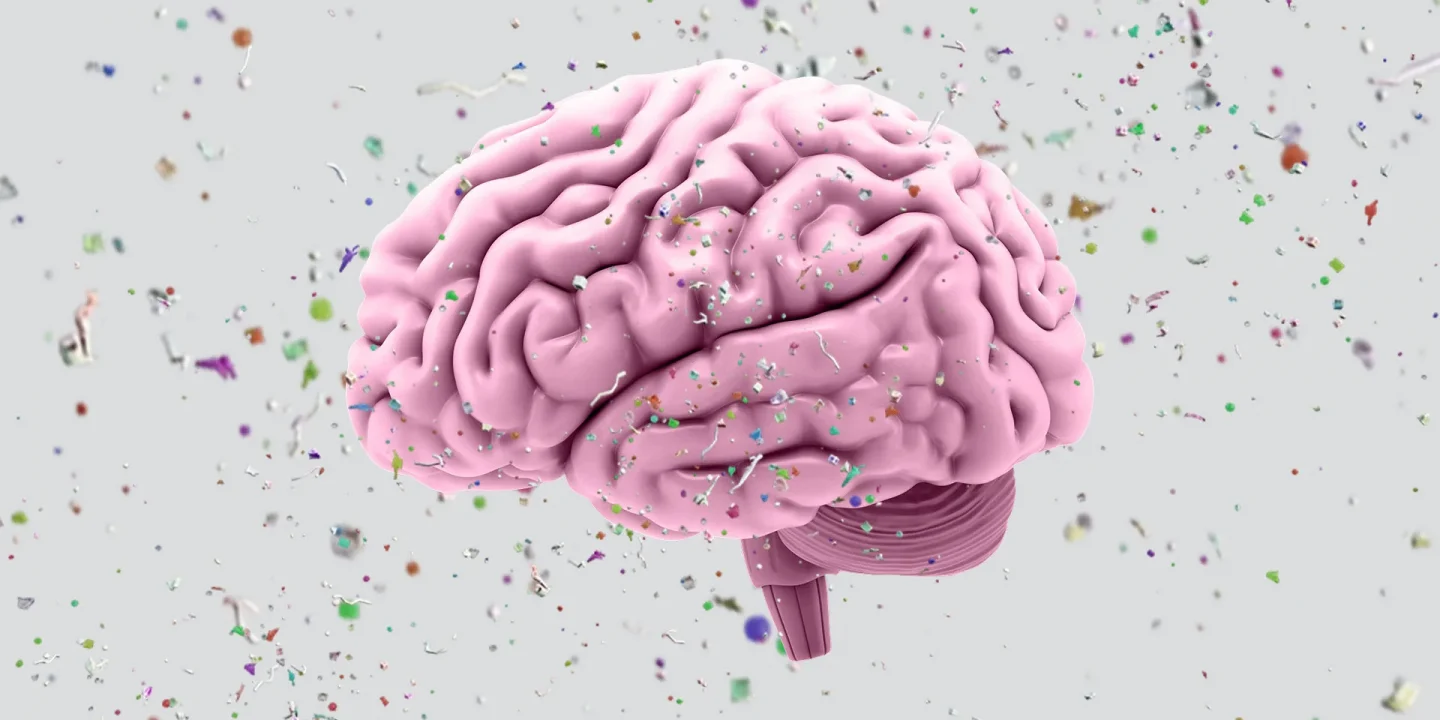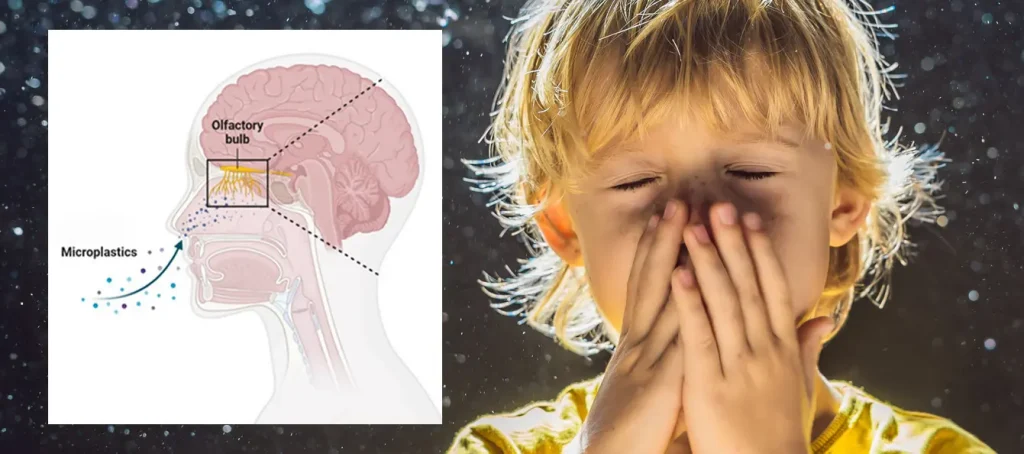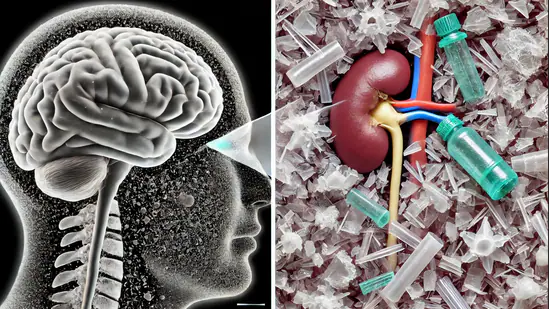
Imagine, for a moment, that the human brain—a marvel of complexity, responsible for everything from thought and memory to emotions and actions—contains a spoon’s worth of plastic. No, it’s not a dystopian scene from a sci-fi novel. It’s the shocking reality of a recent discovery: the human brain has been found to contain nanoplastics, and in quantities equivalent to about a spoonful.
This revelation isn’t just mind-blowing; it’s deeply concerning. The plastic pollution crisis, which has been steadily infiltrating our oceans, air, and food, has now made its way into the very organ that controls who we are. So how did this happen? Will the plastic build-up continue? And what impact does it have on our health and future? Let’s dive in.
So, How Did Plastic End Up In Our Brain?
It might sound unbelievable, but it’s true: plastics are everywhere. The tiny particles, known as nanoplastics, come from the breakdown of everyday plastic products. You probably don’t even notice them—these little invaders are so small that they can sneak right past your body’s defense systems. Normally, your brain is protected by something called the blood-brain barrier (BBB), but nanoplastics are so tiny that they slip right through it, traveling via your bloodstream to the brain.

Every time you drink from a plastic bottle, eat packaged food, or even wash your clothes (hello, synthetic fabrics), you’re unintentionally letting plastic particles into your body. They might seem harmless at first, but these particles build up over time and end up in places you’d never expect—your brain.
In fact, humans ingest approximately 5 grams of plastic per week—the weight of a credit card—according to a 2020 study published in Environmental Science & Technology. This comes from food, drinking water, air, and even dust, highlighting the pervasive nature of plastic pollution. With plastic production reaching over 300 million tons annually (Plastic Pollution Coalition), it’s no surprise that nanoplastics are making their way into our bodies, including our brains.
Will the Plastic Crisis in Our Brains Get Worse?
If you think the amount of nanoplastics in the brain is a one-off occurrence, think again. The situation is poised to worsen. The world’s plastic consumption continues to skyrocket, and microplastics are already infiltrating nearly every ecosystem. Studies show that these plastic particles are present in the air we breathe, the water we drink, and the food we eat.
As plastic pollution grows, so too will the number of these particles in our bodies. Nanoplastics are especially dangerous because they are so small that they can bypass biological barriers like the blood-brain barrier. With millions of tons of plastic entering our environment every year, and a lack of sufficient plastic waste management, it’s inevitable that these particles will continue accumulating in our bodies—most worryingly, in our brains. It’s a ticking time bomb, and we’re all at risk.
The Startling Impacts of Nanoplastics on Human Health
The discovery of nanoplastics in the brain has raised a host of questions about what these particles are doing to our health. Scientists are still unraveling the long-term consequences, but the early evidence suggests that the risks are far more significant than we may have realized. Here are some potential impacts on human health:
- Chronic Inflammation and Neurodegeneration: Nanoplastics are known to trigger inflammatory responses in cells. When these particles accumulate in the brain, they could lead to chronic inflammation, a condition linked to neurodegenerative diseases like Alzheimer’s and Parkinson’s. Over time, persistent inflammation could accelerate cognitive decline, memory loss, and other serious mental health issues.
- Impaired Brain Function: The presence of nanoplastics could disrupt the intricate communication pathways between neurons in the brain. Neurotransmission is essential for everything from learning and memory to motor control. Nanoplastics may interfere with this process, leading to cognitive issues, difficulty concentrating, or even mood disorders. It’s the kind of disruption that could have a lasting impact on mental health.

- Toxic Chemical Exposure: Plastic isn’t just plastic. It contains a cocktail of toxic chemicals—BPA, phthalates, flame retardants, and more—that can leach into the body when the plastic breaks down. These substances are endocrine disruptors, which means they can mess with our hormones, including those responsible for brain development and function. Over time, exposure to these chemicals could lead to developmental issues, mood disturbances, or even contribute to brain cancer.
- Carrying Other Contaminants: Nanoplastics are like little sponges, absorbing other harmful pollutants from the environment as they float through the air, water, or food chain. These particles may carry pesticides, heavy metals, and other dangerous substances straight into the brain. The combination of these toxic materials could exponentially increase the damage done to brain tissue, leaving us more vulnerable to diseases and disorders.
- Accelerated Risk of Neurodegenerative Diseases: The research into nanoplastics suggests that they might play a role in the development of neurodegenerative diseases like Alzheimer’s, Huntington’s, or Multiple Sclerosis. The slow, insidious accumulation of these particles in the brain could potentially trigger abnormal protein folding or neuroinflammation, setting the stage for these debilitating conditions.
What Can We Do to Reverse the Damage?
It’s clear that we need to take immediate action. Here’s what can be done to stem the tide of nanoplastics entering our bodies and brains:
- Reduce Plastic Consumption: This is the most obvious solution. We need to rethink our reliance on plastic and embrace alternatives that don’t contribute to the growing pollution problem. Recycling needs to become the norm, not the exception.
- Ban Harmful Plastics: Governments should regulate and phase out the production of certain types of plastics, particularly those that break down into micro and nanoplastics.
- Invest in Innovation: Investing in research for biodegradable, non-toxic alternatives to plastic could lead to safer, environmentally friendly materials that reduce the global plastic burden.
- Raise Awareness: Public education campaigns should highlight the dangers of plastic pollution and motivate individuals to adopt sustainable practices.
Conclusion: A Crisis We Can’t Afford to Ignore
The discovery of nanoplastics in the human brain is more than just a concerning scientific fact—it’s a wake-up call. Our brains, the very organs that define who we are and drive our existence, are being slowly invaded by these microscopic pollutants. The implications for human health are potentially catastrophic, and without urgent action, the situation will only get worse. The time to reduce plastic waste, protect our environment, and safeguard our health is now—before the effects of this pollution are irreversible. We cannot afford to wait any longer.













